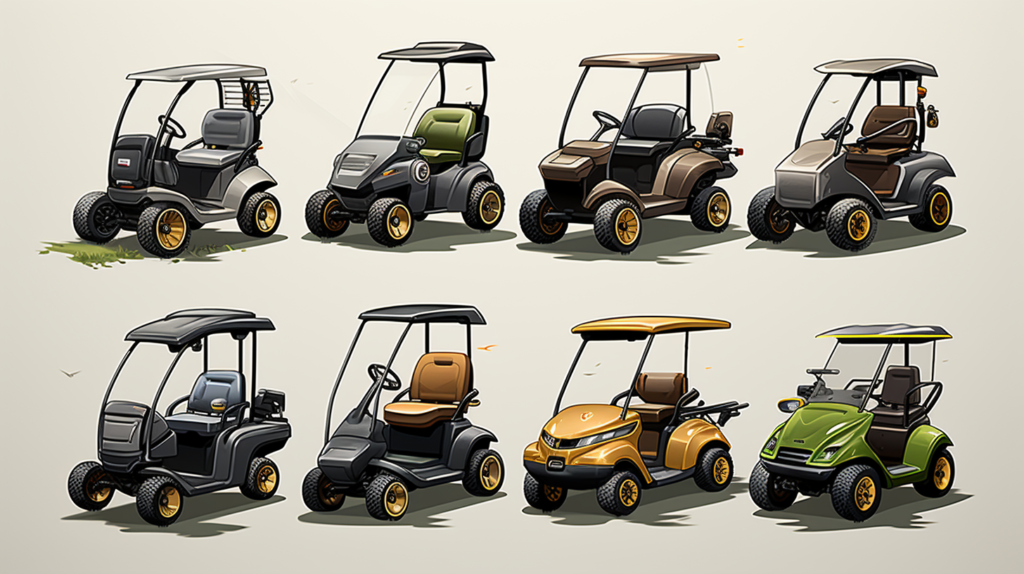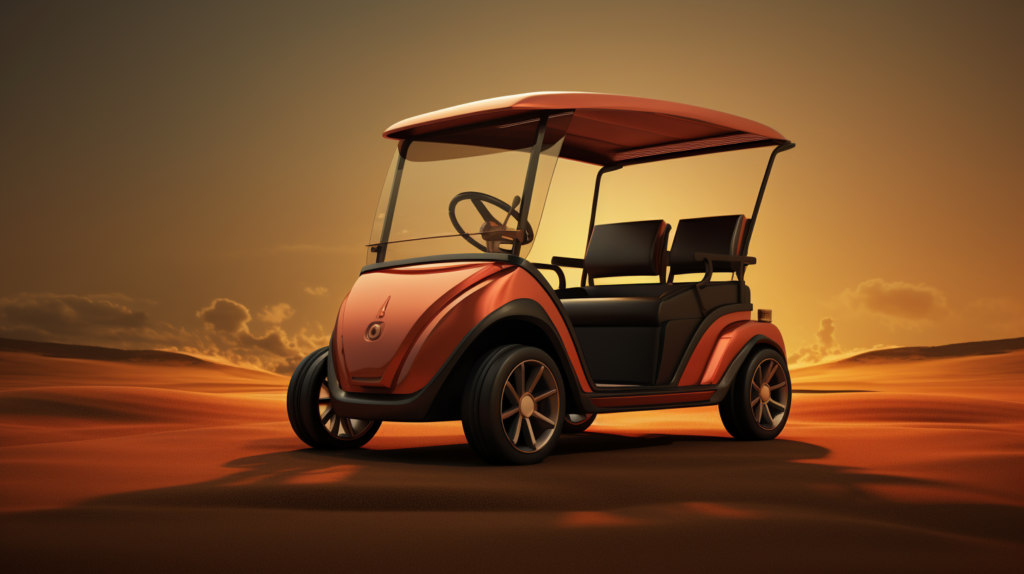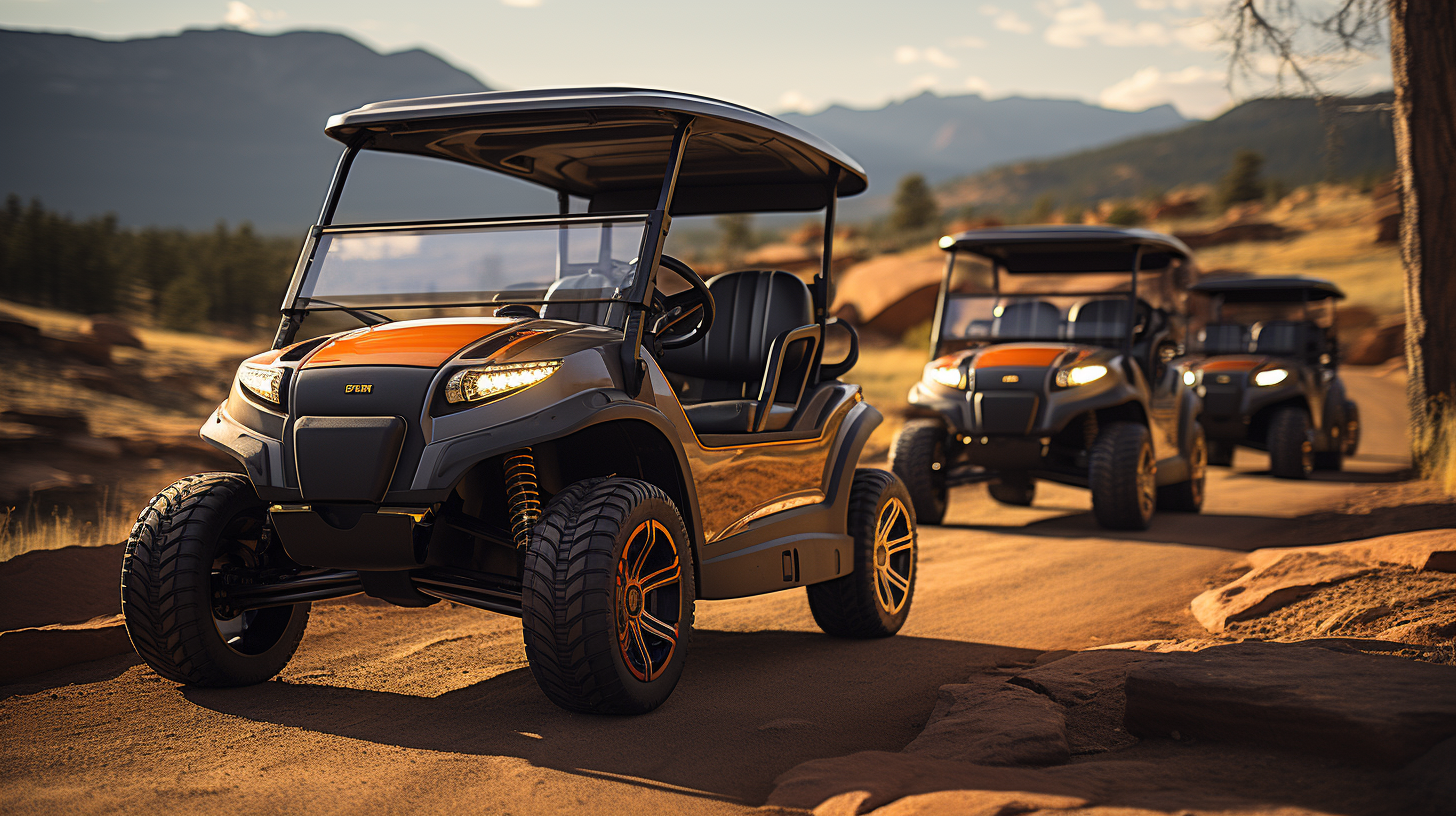Golf carts may seem slow, but customized models can reach street vehicle speeds. So just how fast can they go?
From electric units governed to under 15 mph to gas-powered speedsters exceeding 25 mph, maximum golf cart speeds depend on critical factors like motor strength, construction and intended terrain.
Let’s take a closer dive into the speed capabilities of different golf cart types to understand what designs and conditions allow some models to really move while others putter along.
How Fast Do Golf Cart Go?

Golf carts come in electric and gas-powered varieties. Electric golf carts generally have lower top speeds, with most models reaching between 15 and 19 mph.
This more limited speed capability allows them to be used legally on streets in certain communities without being considered motor vehicles.
Gas-powered golf carts can typically reach speeds of around 20 mph and some specialized cart designs go faster, with top speeds of 25 mph or more.
The type of motor and engine power, overall vehicle weight and intended driving terrain are factors that impact a golf cart model’s maximum speed performance.
Gas-powered carts offer more power and speed potential but electric models have advantages like quieter operation and less required maintenance.
For many basic transportation needs around the golf course, residential community or campground, even slower cart speeds in the 14 to 17 mph range are perfectly adequate. Specific speed ranges are outlined in more detail by common golf cart categories in a later section.
Factors That Affect Golf Cart Speed

The speed capabilities of golf cart models are determined by multiple design factors, including the size and capability of their drive motors and engines, overall vehicle weight and weight distribution.
Whether they are built for smooth or off-road surfaces, along with usage options and legal restrictions that require speed control governors.
Motor Size & Power
Electric golf carts rely on an electric motor and battery system to provide their propulsion power. More limited motor size in basic economy electric cart models keeps their top speeds down in the 15 mph range.
Larger, higher performance electric motors allow certain carts to reach maximum speeds of 19 mph or slightly more.
Gas-powered golf carts operate via internal combustion engines that run on gasoline fuel, typically in the 500 to 1,000 cubic centimeter displacement range. Four stroke engines between 6 to 10 horsepower are common.
More engine power directly translates into greater speed capacity in gas golf cart designs.
So while a typical four-stroke, 404 cc 9 horsepower engine may reach around 20 to 22 mph, selecting a beefier 18 to 20 horsepower engine enables maximum golf cart speeds of 25 to 28 mph.
Golf Cart Weight
The total weight of a golf cart and distribution of that weight impacts its speed and handling. Electric carts equipped with more batteries to extend driving range or heavier aftermarket body components add weight that hampers speed performance.
Heavier gas-powered carts face the same issue. Purpose-built high-speed or “speedster” golf cart models opt for lighter construction with fewer batteries or streamlined bodies to remove excess weight and gain speed advantages.
They sacrifice range or certain features for faster speed by trimming pounds.
Terrain & Conditions
As specialized vehicles built for operating on the short grass and smooth terrain of golf courses, standard golf carts deliver their best speed performance under those ideal surface conditions. Maximum flat course speeds will not be achievable on rougher or uneven terrain.
Hills and inclines will also limit how fast most stock golf carts can travel.
Certain higher-performance golf cart designs incorporate features like enhanced suspension, higher ground clearance and all-terrain tires that make them more capable of maintaining speed over changing landscape.
But in general, smooth flatness allows access to top golf cart speeds while grass, slopes or uneven ground will require slower driving.
Speed Control Governors
Most standard production golf carts come equipped with electronic speed governors that use RPM limiting or other means to cap top speeds at around 15 to 20 mph when operating stock.
This controls speed for safety considerations and to meet legal standards that qualify golf carts for low speed vehicle status in certain jurisdictions rather than falling under full motor vehicle design laws.
The speed governors ensures stable road handling and limiting potential damage from driving faster than the limited golf cart brakes, suspension and other systems may safely allow.
But some higher performance carts alter stock governor settings to enable unlocked maximum speeds of 25 mph or more. Even standard carts can have governor adjustments or modifications made for 5 to 10 mph speed increases, though it comes with safety tradeoffs.
Speed Capabilities by Golf Cart Type

There is a fairly wide range of speeds and performance levels across the spectrum of golf cart classifications.
Basic electric carts meant primarily for reliable course transportation fall at the lower end around 14 mph while customized gas-powered carts built for speed may reach 30 mph or beyond. Typical speed ranges by golf cart groupings are:
Standard Carts
The vast majority of mass market electric and gas-powered general use golf carts sold fall into a standard or regular designation. With speed governors set primarily around safety and legal low speed vehicle thresholds, they offer speed capabilities of:
Electric: 14 to 17 mph
Gas: 18 to 22 mph
Even among standard carts, certain upgraded models with high efficiency drive systems or turbocharged engines may reach speeds closer to 19 or 23 mph. Aftermarket alterations to stock speed governors could add a few miles per hour.
High-Speed Carts
For more pace over the fairways, speed focused custom cart designs offer performance upgrades.
Typical electric high-speed or “speedster” golf cart models can reach peak speeds of up to 19 mph via hot rodded drive components and removal of governor restrictions capping normal cart maximum speeds closer to 15 mph.
Gas-powered speed golf cart configurations generally include a larger 15+ horsepower engine not governed down to normal efficiency ranges along with optimized drivetrains and lighter overall weight for maximizing speed potential to around 25 mph or more.
Off-Road Utility Carts
On the other end of the spectrum, sturdy off-road utility golf carts used in areas like grounds maintenance sacrifice speed for ruggedness and cargo/payload capacity.
Heavy-duty construction, oversized tires and revised gearing aim for torque rather than velocity, capping average maximum golf course speeds at around 15 mph or under.
Though ultimate speed depends on specific utility vehicle models and load weights carried affecting performance.
The wide variance of speed across golf cart types comes from tailoring particular models to favor either safety and stability or outright speed depending on intended driving usage.
Standard electric and gas golf carts rely on lower speeds and governed operation for reliably transporting passengers around courses and communities without high speed risks. Custom cart configurations remove certain restrictions for thrill-seeking pace over the fairways.
And rugged task-focused utility carts gain durability not velocity as design priorities in their development.
Conclusion
Golf cart speeds are influenced by many factors from motor strength and vehicle design to terrain and operational usage. Basic electric cart top speeds fall between 14-17 mph while standard gas-powered models reach 18-22 mph.
Custom speedster carts can get up to 25 mph or more. And off-road utility carts typically sacrifice velocity for ruggedness and capacity.
Understanding the speed differences allows matching expected golf cart pace to needs whether that is easy course transport or thrilling drives down the fairways.



